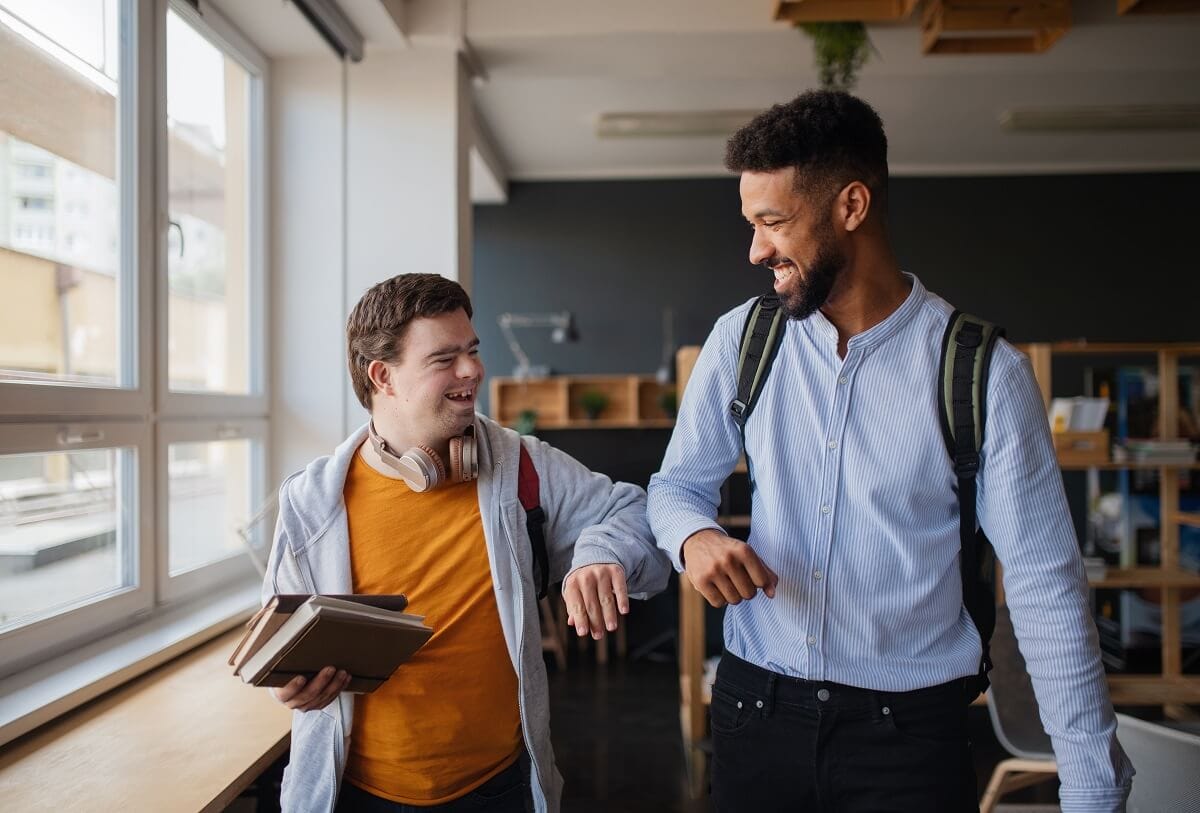The Importance of Disability Inclusion: Ensuring Equality for Children and Adults
The Importance of Disability Inclusion: Ensuring Equality for Children and Adults
Did you know that there are 4.4 million people with disabilities in Australia? That’s a significant portion of the population, and yet seldom are stories told from this perspective. Like any group of people, those with disability make up a rich set of experiences and values with a great deal to contribute to Australia, both culturally and economically. As a society, we rightly strive to break down as many barriers as possible to make sure that nobody is excluded from enjoying everything that Australia has to offer, simply for factors which they have no control over, be they skin colour, sexual orientation or religion. However, one group is often left behind in this pursuit—people with disability.
In this blog we’re going to take a look at how businesses, institutions and individuals can help create a more inclusive environment that promotes community participation for people with disability.
What does inclusion mean with disabilities?
To understand disability inclusion, we must first understand how some people experience the opposite—exclusion. There are a number of factors that may lead to a person with disability being excluded. These may come in the form of overt physical barriers such as premises that fail to ensure accessibility for those with physical disability.
In other cases these barriers may be more subtle and lead to a culture in which a person with a disability may be made to feel discriminated against and disrespected. Expressions such as ‘victim’ or ‘sufferer’ suggest a dissatisfaction with life, that there is something not ‘normal’ about living with a disability. Words like these contain an implicit, and deeply offensive assumption that having a disability is something to be pitied, which is simply not the case.
Why is disability inclusion important?
Creating a more inclusive workplace and public space will help break down these barriers, prejudices and biases to make sure that nobody is physically excluded from any kind of environment. It also means being conscious of the language we all use so that nobody is made to feel inferior. It’s important to remember that there are invisible disabilities as well as visible disabilities, so it’s often a matter of changing attitudes rather than superficially regulating language just because there is a person with disability in your presence.
If you’re a business owner or employer, you’ll find that breaking down these barriers will greatly increase your talent pool. Diversity of skills and assets among employees will ultimately increase the social and economic value of any work environment.

Challenges faced by people with disability
There are many, but no two people are the same, so everybody has their own unique experiences in this space. There are, however, some key indicators that show where there could be improvements in Australia’s disability inclusion efforts.
- Poverty
People with disability experience higher levels of poverty, live in poor quality or insecure housing and can have low levels of education. This leads to social isolation with fewer opportunities to take part in community life. - Poor mental health
Mental health problems and mental illness are among the greatest causes of disability, diminished quality of life and reduced employment opportunities. - Disability employment gap
Australia ranks lowest among OECD countries for the relative income of people with disability. Overall employment rates for people with disability remain low, with workforce participation at around 54 per cent compared to 83 per cent for people without disability. - Incarceration
Young people with mental health disorders and/or cognitive impairment are significantly more likely to experience incarceration compared with young people without disability – by at least six times according to this study. - Public transport
Despite progress towards making all public transport in Australia fully accessible by 2022, 1.2 million people with disability report difficulties using public transport.
These are obviously some big issues, and by all means they are not an exhaustive list. However, by considering how to be more disability inclusive at work, at home and in any other public space, you’re already helping to prevent people from falling into some of these traps.

How to promote disability inclusion in businesses, workplaces and schools
Inclusion strategies can incorporate a range of practices that help promote social responsibility. Some may require a bit of investment, but most come with zero cost. They may include:
- Disability awareness training
- Reasonable accommodations such as wheelchair ramps, hand rails etc.
- Language considerations:
- Reference a person’s disability only when it’s relevant.
- Focus on the person, not the disability.
- Use the word disability as an uncountable noun, e.g., person or people with disability, NOT person with a disability or people with disabilities.

What are the benefits of inclusion for students with disability?
While the above mentioned suggestions for how to be disability inclusive are worth adopting in any situation, nowhere is it more important than in schools. A child’s formative years are crucial for developing social skills and friendships, which are often a significant indicator for quality of life in later years. By fostering an inclusive environment in schools, you’ll be helping to make all children feel included and valued, which will go a long way in improving lifelong outcomes.
Helping people with disability achieve their goals
At St Jude’s Disability Support Services, we value inclusivity among all else. To learn more about our person-centered and strengths based approach to NDIS support coordination, please speak to any of our friendly staff. With the right services and a supportive environment, we believe everybody has the chance to make their mark on the world.